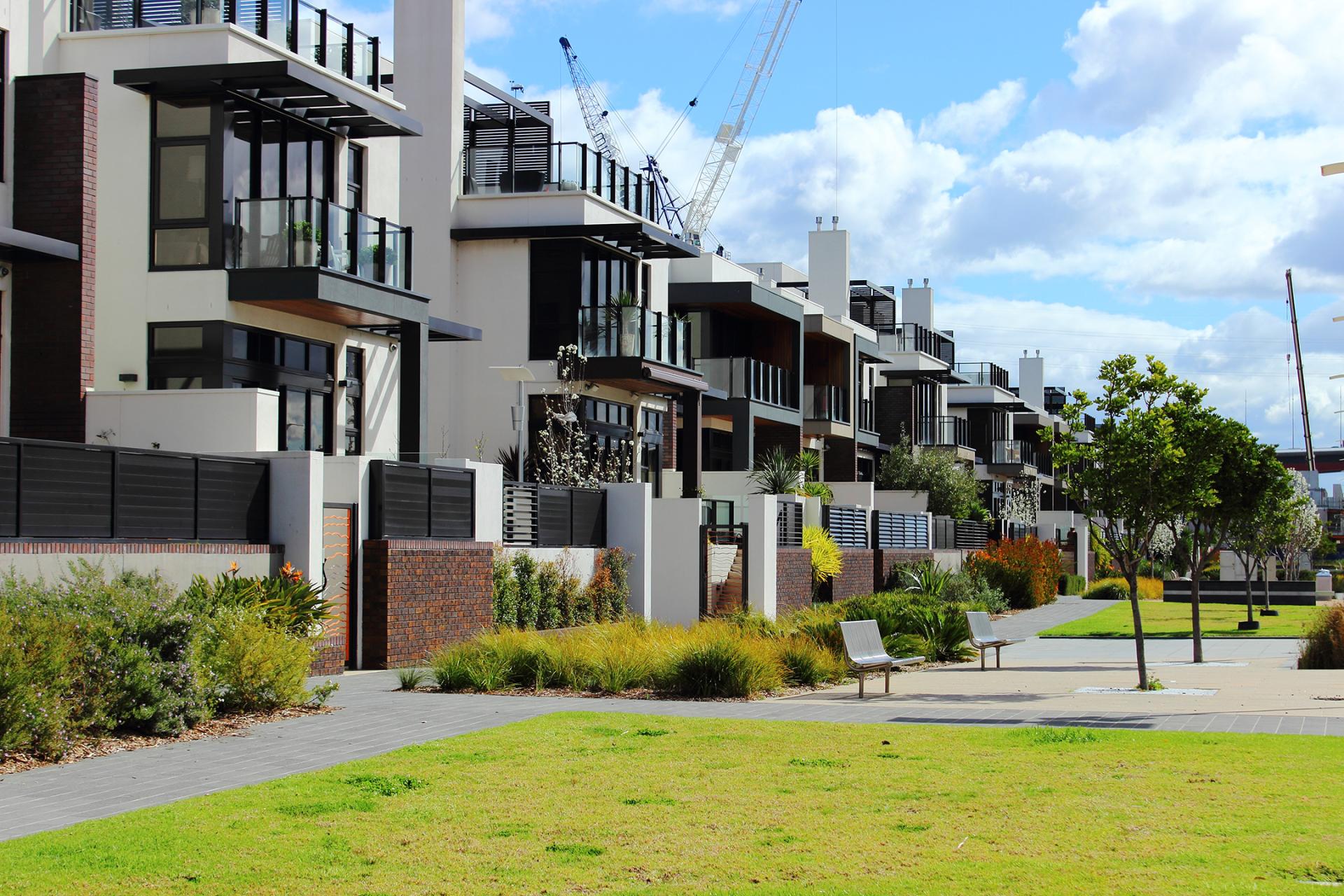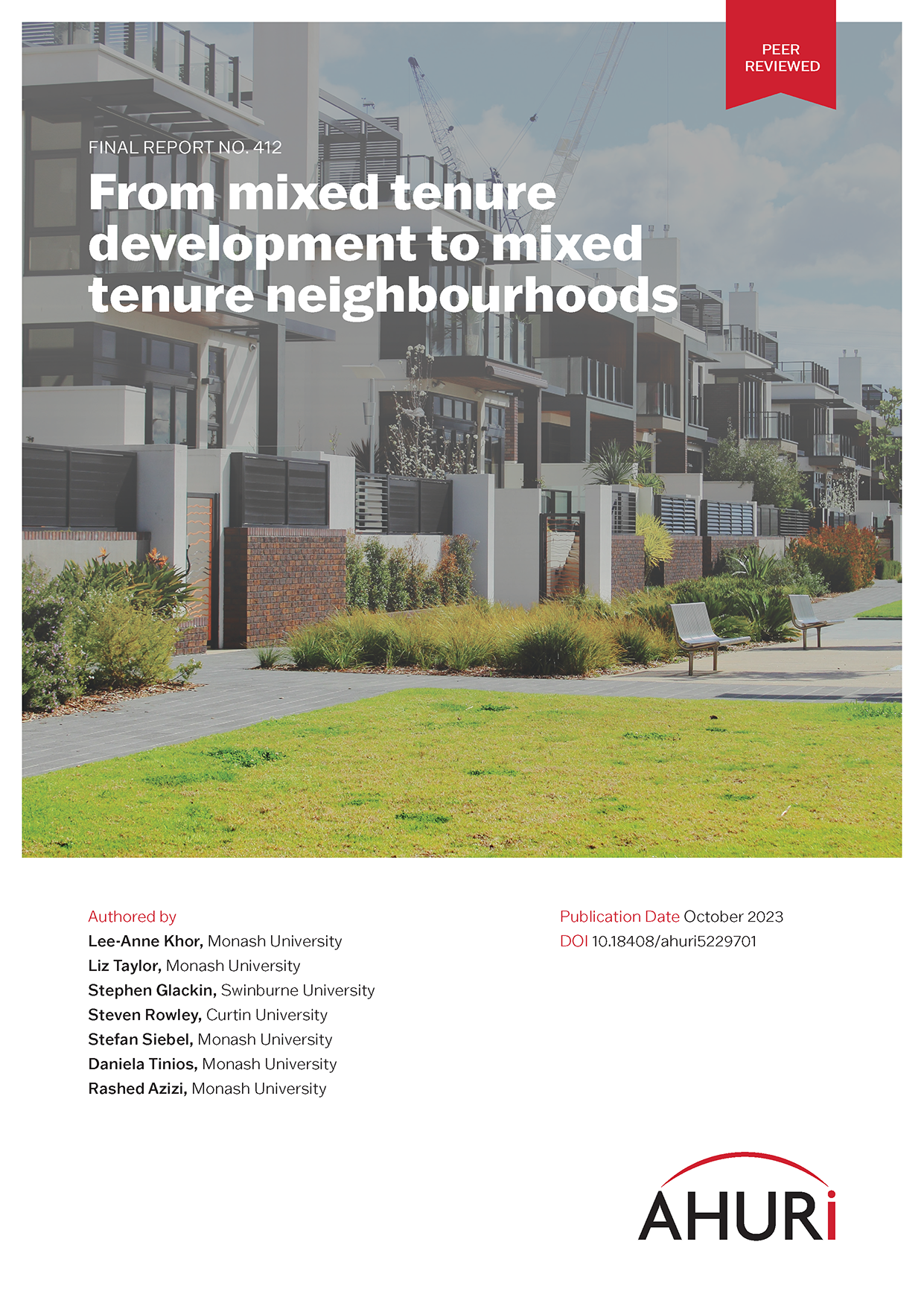
Mixed tenure neighbourhoods are a recipe for success when redeveloping social housing
20 Nov 2023
Renewing around 12,000 smaller scale social housing assets as mixed tenure neighbourhoods could deliver more than 40,000 medium density dwellings across Brisbane, Sydney and Melbourne, according to new AHURI research. Even more social housing could be delivered if other underutilised land (‘lazy land’) in cities and regional towns is included in renewal strategies.
The research, ‘From mixed tenure development to mixed tenure neighbourhoods’, undertaken for AHURI by researchers from Monash University, Swinburne University and Curtin University examines the opportunities for mixed tenure housing developments in Australia, and in particular how to upscale successful mixed tenure outcomes at a neighbourhood scale. Redevelopments that encompass a broader ‘neighbourhood scale’ provide much greater flexibility for achieving dwelling and tenure mixes, cross-sector partnerships, capacity building and long-term uplift of an area or region.
Good mixed tenure neighbourhood opportunities exist across the country
‘Being able to deliver mixed tenure neighbourhoods relies on being able to bundle together appropriate land,’ says lead researcher, Dr Lee-Anne Khor of Monash University. ‘Our research estimates that across Brisbane, Sydney and Melbourne alone there are over 12,000 existing social housing properties that are suitable for neighbourhood redevelopment. Of those, 8,000 properties are in medium-density and high-density zones that could deliver a diversity of mixed tenure housing outcomes almost immediately.’
The research also tested neighbourhood scale design scenarios in three locations using different models of mixed tenure:
- The first, in St Marys, NSW, diversifies apartment supply with mid-rise and low-rise residences in strategic development precincts (where low-grade commercial assets such as car parks sit alongside social housing).
- The second, in Mt Gravatt East, Queensland, tests how modest multi-residential types can deliver dwelling and amenity increases in a low-density residential zones.
- The third scenario, in Jacana/Broadmeadows, Victoria, looked at neighbourhood renewal in a low-rise, medium-density zone.
‘The case studies show that neighbourhood-scale development does provide state housing authorities with good opportunities to cross-subsidise social housing development,’ says Dr Khor. ‘This would enable them to potentially deliver other, less subsidy-intensive affordable housing products on an even greater scale. Our scenarios do highlight that it is more effective, and much simpler, for state housing authorities to sell off dwellings to the private market and use the revenue to subsidise the delivery of social housing either directly, or indirectly through CHPs. But some properties are more useful than others for delivering a diversity of dwellings and amenity upgrades. By assembling the right properties in an neighbourhood, governments can facilitate better outcomes for housing providers, tenants and existing communities.’
The research also challenged the widely promoted ‘70:30 mix’ redevelopment model, where 70 per cent of housing is sold at market rate and 30 per cent sold at a discount to CHPs. Instead the findings show that there is no optimal dwelling and tenure mix for mixed tenure development; rather it is dependent on a range of factors related to project scale and location, funding, land, tenant characteristics, management and maintenance costs.
‘A key finding from our research is that low-value areas have fewer opportunities to leverage existing government assets for mixed tenure housing. Maximising local amenities and delivering initial projects that catalyse uplift for future developments are key,’ says Dr Khor. ‘A place-based design approach could be used to inform long-term asset management strategies. Developing mixed tenure neighbourhoods using public land assets can cross-subsidise social housing development and generate a net increase in social housing in the short term. A pipeline of projects that capture the value of ongoing neighbourhood improvements could enable successful mixed tenure outcomes to be upscaled over time.’.

